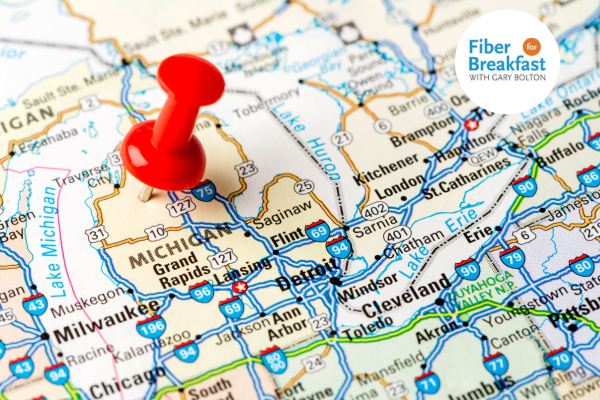Cable’s All Fiber Future
The dirty little secret in the cable industry is its increasing use of fiber and the roadmap of technologies it will adapt in the years to come to deliver 10 Gbps and faster speeds to its customers. Fiber is an essential element for cable builds, especially in rural areas where the need for speed is driving a “fiber rich” or “fiber deep” approach.
Fiber has been the go-to medium of choice when it comes to greenfield builds for years, so much so NCTA–representing “America’s Cable Industry”–features a 2017 fiber build by Eagle Communications in the rural town of St. Francis, Kansas on its website. Residents can get up to gigabit symmetrical speeds today through a fiber-to-the-home network–presumably with no traditional coax cable involved.
But America’s Cable Industry has big plans for existing infrastructure as well, putting fiber deeper into the network to deliver higher speeds to existing customers on legacy cable plant. CableLabs, the self-described “leading innovator and R&D lab for the cable industry,” has lots of information on the technologies it is working with today for moving to 10G service and beyond. The 10G platform being promoted today is expected to delivery better network reliability, security, and low latency, as well as raise the cable industry’s current 1 Gig broadband delivery bar.
One of the cornerstones to 10G and beyond services is CableLabs PHYv1.0 and PHYv2.0 point-to-point coherent optics standards, initially providing standardized equipment to deliver 100Gbps and 200 Gbps Ethernet speeds on a single wavelength of light for distances of up to 80 kilometers on a single strand of fiber. The combination of distance and high speed enables a cable operator to set up a high-speed Ethernet link between a cable head-end data center and an outdoor unit in the field where services will be distributed to customers at the last mile (or less).
A clean high-speed Ethernet link enables cable companies to get rid of a lot of legacy equipment in the middle and towards the edge of the network, with legacy control and management services virtualized and delivered in software. Putting things in software instead of using dedicated hardware reduces energy consumption and improves overall reliability, especially as field equipment gets older.
Cable Labs is a bit vague on how service providers will go beyond 10 Gig speeds, other than to note a combination of new standards like its full duplex coherent optics technologies and “a few plant updates” will provide a path to 25G and beyond. Back in 2018, Cable Labs President and CEO Phil McKinney said coherent optics demonstrations delivered 256 Gbps over 80 kilometers using a single wavelength of light, with multiplexing of eight wavelengths providing speeds of up to 2 terabytes (Tbps). Further improvements in encoding and modulation were anticipated to bring up speeds to 4 Tbps.
Talking about delivering speeds of 10 Gbps and faster isn’t crazy talk by the cable industry, especially for business customers who typically want symmetrical bandwidth and guaranteed quality of service through SLAs. Businesses currently on coax cable are likely to be the first to get a full fiber upgrade. Residential customers may take a bit longer for a “last mile/last foot” upgrade, but the maintenance and power advantages of fiber over legacy hardware are just too good to ignore.




